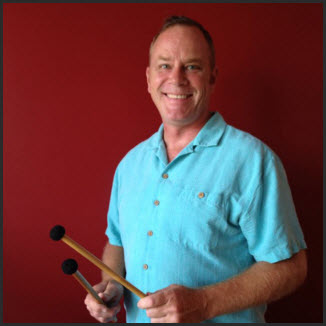The Flam Accent is a very important rudiment to practice because it works your triplet feel, your double sticking and your flams.
Take a look at this video and I’ll go over the flam accent for you.
In musical notation, the flam accent looks like this:
The first thing to do is to play a flowing triplet pattern like this:

Play alternating strokes and accent the first of each triplet. You can say ONE two three One two three or TREE o la Tree o la to help you establish the rolling triplet feel.
Now your ready to add the flams. Start slowly and play a Right handed flam followed by two alternating strokes starting on your left, then play a Left handed flam followed by two alternating strokes starting on your right. Make sure that you play evenly and don’t stop the triplet pattern.
How to play faster flam accents
Practicing slowly at first to really learn the sticking of the flam accent is the most important thing to do before you attempt to play this rudiment fast, but once you’ve really taken the time to commit it to memory it will be easy to speed up.
Don’t allow yourself to play with any tension at all. If you feel tight; slow things down to where you feel comfortable a loose then slowly increase your speed. Each time you practice you should try to get a little faster but only if you can stay loose.
The Paradiddle and the Flam Accent are related
Once you understand this fact about these two rudiments you will be able to play both of them a little faster.
The Paradiddle sticking is RLRR LRLL, right? Well, so is the Flam Accent’s sticking. The difference is that the second part of the diddle is the grace note or the flam note for the start of the Flam Accent.
The lower case letter is the grace note and the upper case letters are the main notes. lRLR rLRL lRLR rLRL and if you leave off the first l grace note you can see that the sticking is just the same as the Paradiddle.

